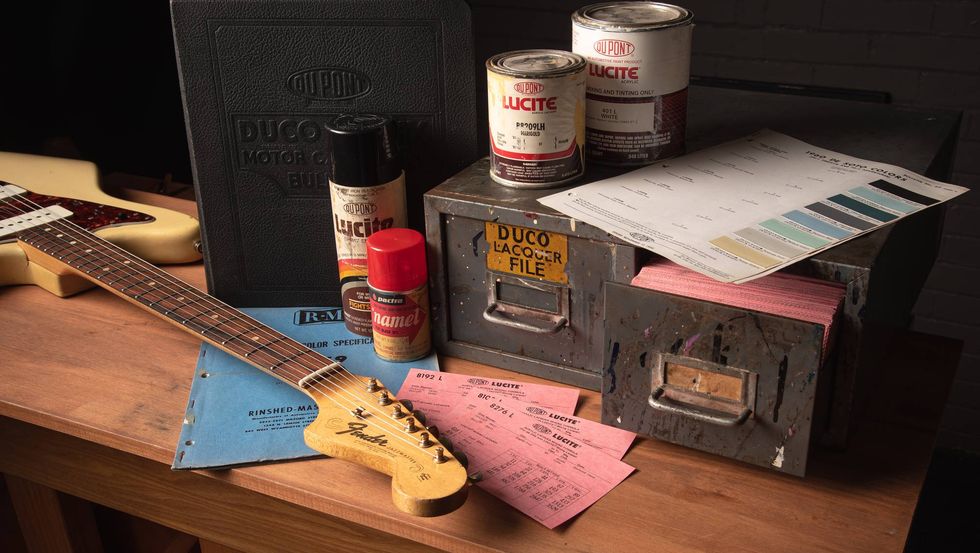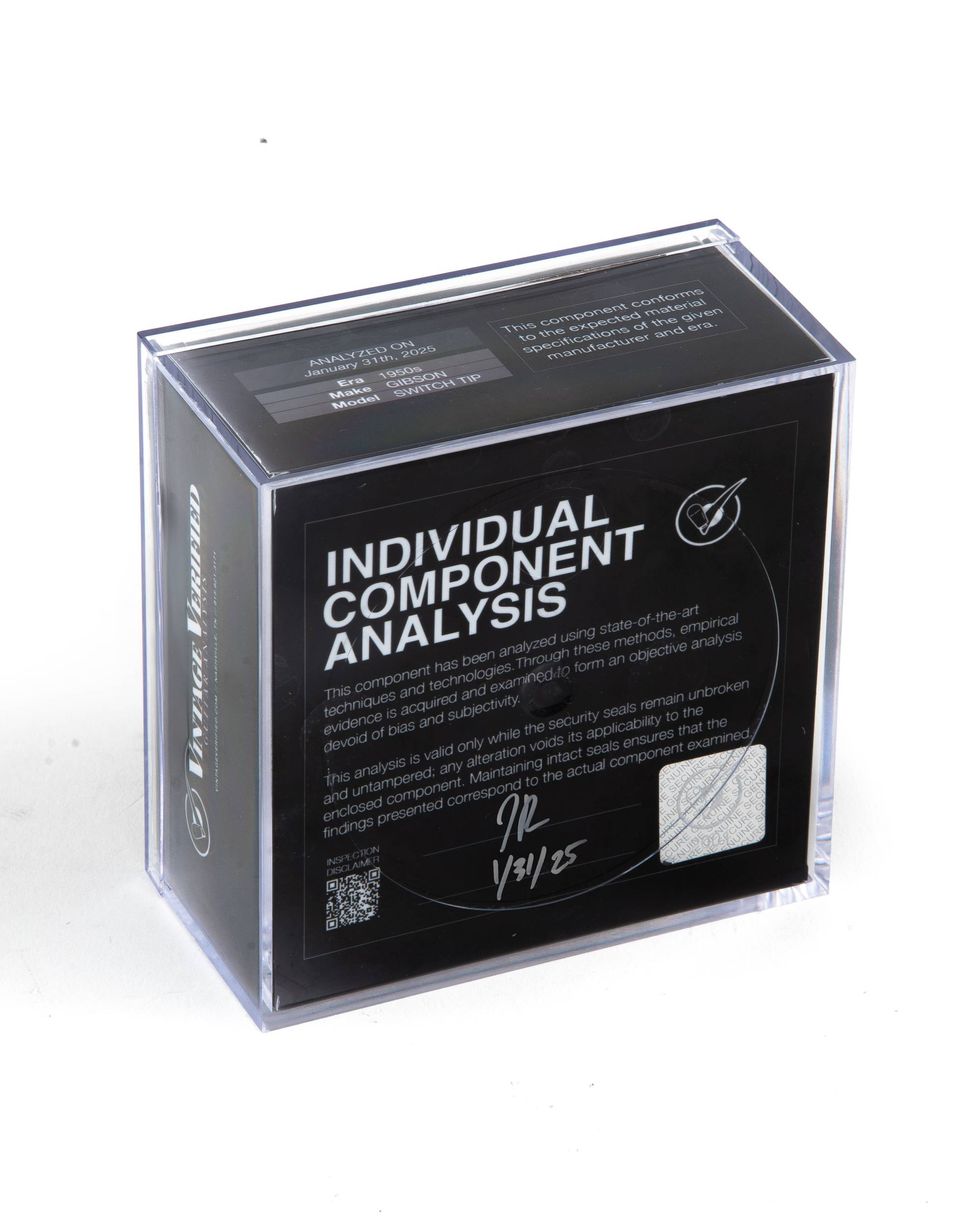If you’re the kind of guitarist who likes to work on instruments—doing your own basic setup and maintenance, for example—you need to have the right tools at your fingertips to get the job done correctly. With simple tools, good instruction, and a modicum of patience, you’ll save yourself money and have the satisfaction of keeping your guitar or bass in top playing condition.
And here’s another important payoff: By performing routine maintenance and basic setups on your instruments, you can better understand how they actually produce sound, and ultimately this will improve your playing.
A well-equipped guitar shop has lots of tools (Fig. 1)—with good reason. The professional luthier or repair person has the training and experience to handle the kind of projects that require an expert, such as fixing broken headstocks, doing fretwork, installing tremolo systems, and dozens of other demanding tasks. Fortunately, maintaining your guitars doesn’t require a complete workshop. Let’s take a look at the essential tools you’ll need for the kind of projects that fall within a musician’s purview.
Fig. 2. The String Action Gauge from Stewart-MacDonald (stewmac.com) is designed to precisely and quickly measure action and neck relief.
Measuring tools. An invaluable part of any kit is the String Action Gauge (Fig. 2) from Stewart-MacDonald (stewmac.com). I use this tool daily—it’s perfect for measuring action at both the 12th fret and nut, and also determining neck relief. You control the latter by adjusting the truss rod, and this handy gauge lets you accurately measure relief before and after making any adjustments.
Another useful tool is a 6" machinist’s metal rule. You can use this when adjusting pickup height or anytime you need precise measurements for replacement hardware, knobs, tuners, and so on.
Fig. 3. Three flathead and three Phillips screwdrivers in large, medium, and small sizes will cover most jobs.
Screwdrivers, nut drivers, and hex keys. I recommend having six different screwdrivers on hand: three flathead and three Phillips in large, medium, and small sizes (Fig. 3). Parts you can adjust with these include pickguard screws, jack plates, neck bolts, tuning key screws, bridge plates, certain truss rods, and some bridge saddles. Having several sizes lets you handle most types of screws used on guitars.
Fig. 4. Nut drivers are essential for tightening output jacks, tone and volume pots, switches, tuner collars, and some truss rods.
Nut drivers (Fig. 4) are great for tightening output jacks, tone and volume pots, switches, tuning key collars, and some truss rods. I’d suggest you keep seven different sizes in your kit: 3/16" and 11/32" for mini switches, 5/16" for Gibson truss rods, 1/4" for Taylor, Guild, and many other truss rods, 1/2" for most potentiometers and jacks, 7/16" for import jacks and potentiometers, and 10 mm for tuning key collars.
Fig. 5. Many guitar adjustments are done with hex keys. The two odd-looking tools on the left are designed to reach truss rods accessed through a flattop’s soundhole.
Having a set of hex keys is essential for adjusting your guitar at home and on the fly. I use about 13 different sizes on a regular basis (Fig. 5). You may not need all 13, but it’s a good idea to collect all the hex keys that fit your guitars. Here are the go-to hex keys in my toolkit: .050", 1/16", 3/32", 1/8", 9/64", 5/32", 3/16", 1.5 mm, 2 mm, 2.5 mm, 3 mm, 4 mm, 5 mm. Having both metric and imperial (U.S.) sizes means you’ll be able to adjust most bridge saddles, truss rods, locking nuts, tremolos, and much more.
Fig. 6. Unlike regular files, nut files produce round-bottom slots that correspond to different gauges of strings.
Nut files. Unlike regular files, these specialized files are designed to produce round-bottom slots that correspond to strings of different gauges (Fig. 6). Nut files come in handy when you have a string that’s constantly hanging up at the nut and causing tuning problems. Many luthier suppliers sell single nut files or sets of them. Although most sets don’t match the exact string gauges you might use, that’s not a problem. I typically select a file that’s slightly smaller than the string and then simply roll the file as I work the slot to expand it to the right width. I recommend you have at least six files—one for each basic string width.
Fig. 7. This Planet Waves ProWinder includes a string-cutter and bridge-pin puller.
String winder and wire cutter. Few things make changing strings easier than a string winder. In fact, it’s good to have two: One in your toolkit and one in your gig bag to ease that panicked feeling when you break a string at soundcheck. There are several great string winders on the market. If you prefer a manual string winder, check out the Planet Waves ProWinder (Fig. 7). It fits the tuners on most acoustic and electric guitars, as well as mandolins. It also has a built-in string cutter and if you have a flattop, you’ll appreciate the bridge-pin puller. There are winders for bass, too.
Fig. 8. Got a hand drill? You can get a string-winding attachment for it.
If you’re like me and prefer an attachment for your hand drill, Planet Waves also makes a Drill Bit Peg Winder (Fig. 8). It’s sized to fit both guitar and bass tuners. It really speeds up the stringing process. Just chuck it into your drill and start winding. The hardest part of using a drill bit winder is remembering which direction the drill is about to turn. You’ll get the hang of it after you use it a few times.
For trimming strings, it’s always good to have a solid pair of wire cutters in your kit, especially if you use a drill bit winder, which won’t have a built-in clipper. And a wire cutter is essential when you rewire a guitar or work on its electronics.
Fig. 9. Guitarists who want to tinker with potentiometers, pickups, and circuitry need a basic soldering kit.
Soldering supplies. A soldering kit (Fig. 9) is another must-have for any guitarist who wants to tinker with potentiometers, pickups, and circuitry. Plus you never know when you’ll have to re-attach a wire to your jack or one of the switches or pots.
Here’s what I keep in my soldering kit: 60/40 rosin core solder (not acid core), 30-watt soldering iron (don’t use a soldering gun because it can degauss pickup magnets), cloth-covered stranded wire (not solid core wire), hemostats for holding wires and parts while you solder them together, and heat-shrink tubing to make the wiring job look professional and provide insulation. Most soldering irons include a small stand for your iron. If you don’t yet have a stand, get one for safety.
Fig. 10. Keep a can of electronics cleaner handy for fixing scratchy pots.
And while we’re discussing electronics, keep a spray can of electronics cleaner handy for fixing scratchy pots (Fig. 10).
Glue. If you’re entertaining the idea of gluing a guitar’s parts, you may have crossed the line that separates “setup or mod projects a guitarist can handle” from “this is a job for a professional.” Don’t get in over your head. When in doubt, take the instrument to your favorite tech.
Fig. 11. Along with a few toothpicks and some Q-Tips, fast-acting cyanoacrylate adhesives like Super Glue can be useful for emergency repairs.
That said, two small bottles of glue can go a long way when your guitar needs an emergency repair. Your toolkit should have a bottle of Titebond wood glue and a small bottle of cyanoacrylate, such as Super Glue. In addition, stock up on a few toothpicks and Q-Tips (Fig. 11).
Combined with a toothpick or two, wood glue can temporarily secure a loose strap button—at least until you can get the instrument to a repair shop. This combination also works well for fixing stripped holes for pickguard and pickup ring screws.
Super Glue is perfect for gluing a loose string nut or temporarily filling a nut slot to get you through a gig. The Q-Tips are essential for immediately cleaning up any excess glue. In fact, whenever you’re holding instant glue in one hand, you should always have a Q-Tip in the other! If you spill or squeeze out too much glue, a Q-tip works great for a quick cleanup.
Fig. 12. A set of miniature bastard files can remove a burr from a bridge saddle, smooth out a sharp fret end, and perform many other useful tasks.
Files. A set of miniature bastard files can solve a lot of little problems, including removing a burr from a bridge saddle, smoothing out a sharp fret end, carving string slots into the nut on a bass, widening the string slots in an acoustic bridge, and much more. They are available in many shapes and sizes. I have four main shapes in my kit: round, flat, half-round, and square (Fig. 12).
If you have several instruments, it’s good to invest in a carefully organized and well-stocked toolkit. You may find you enjoy the process of maintaining your axes almost as much as playing them.



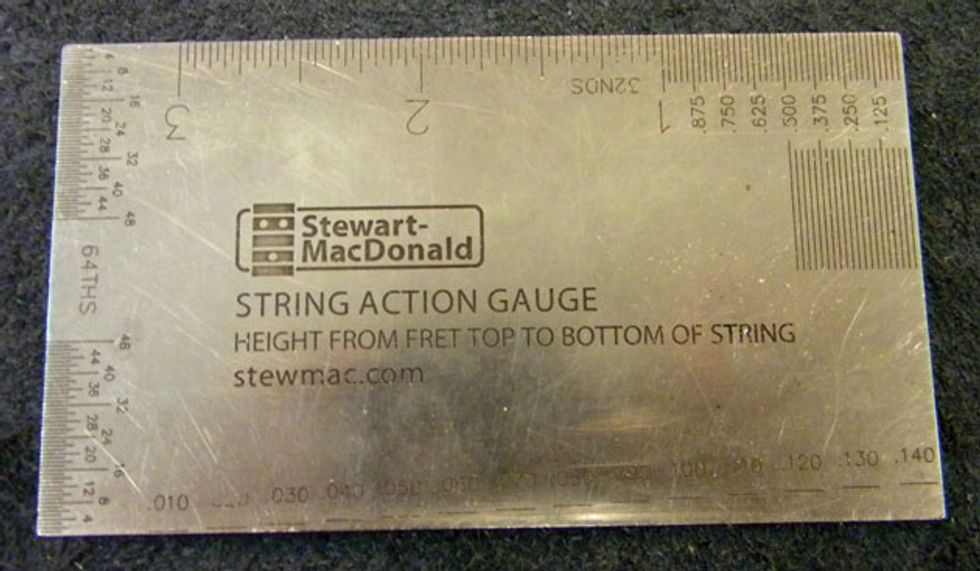
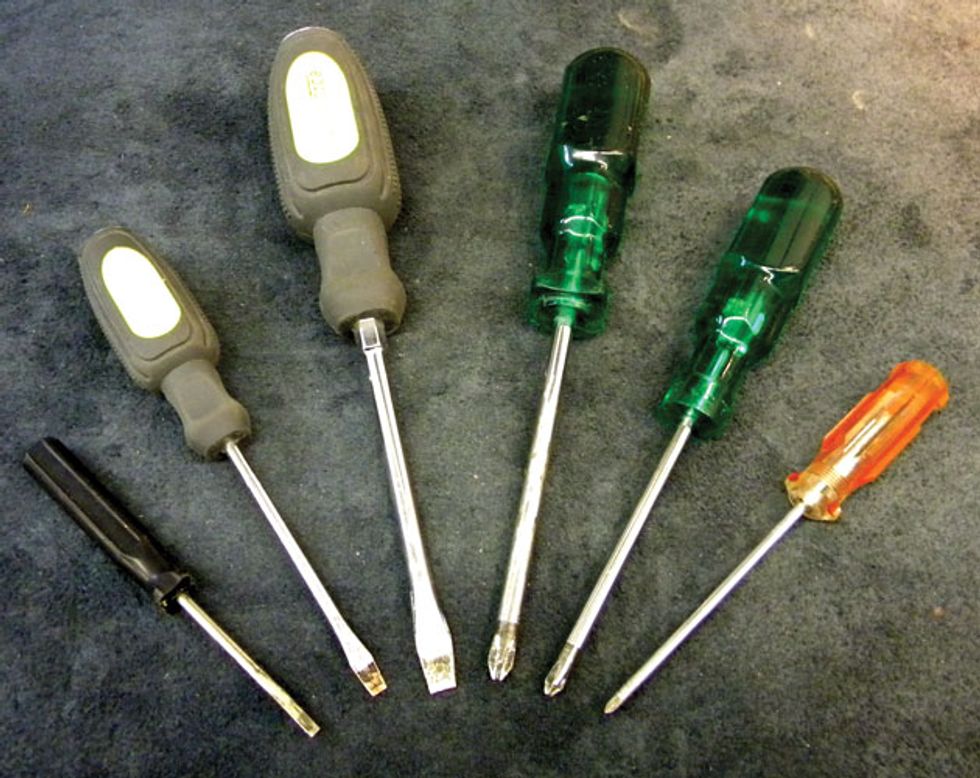
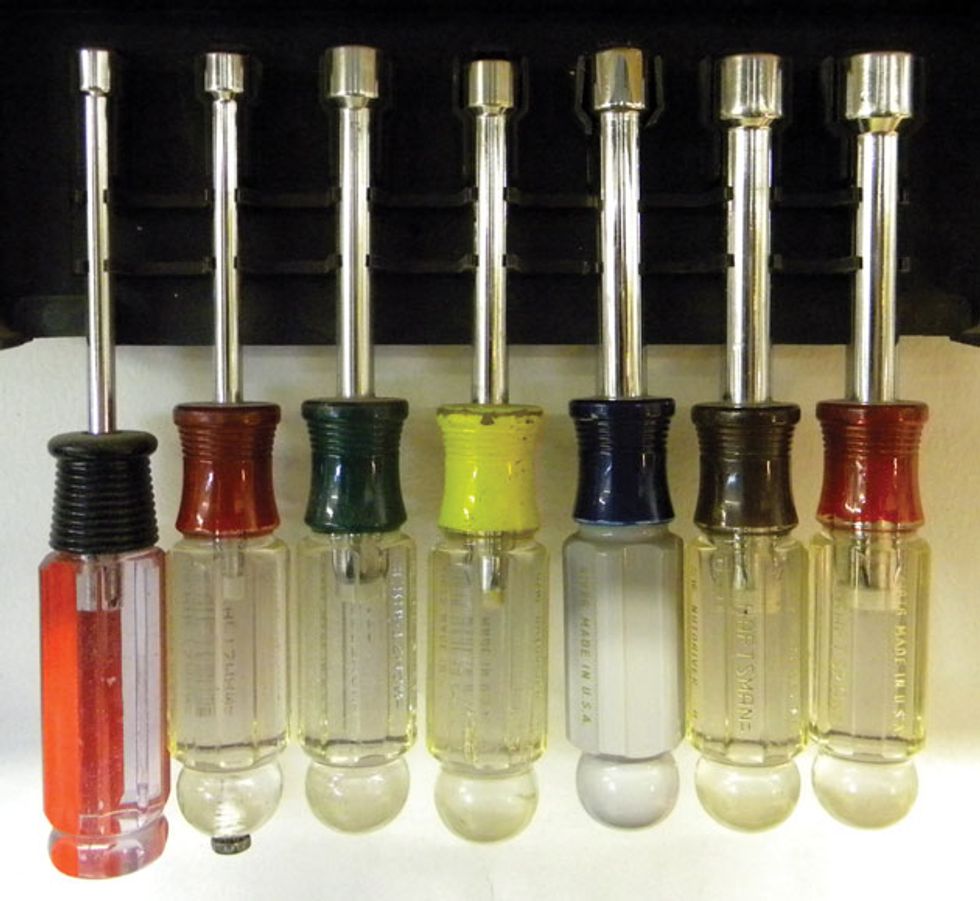
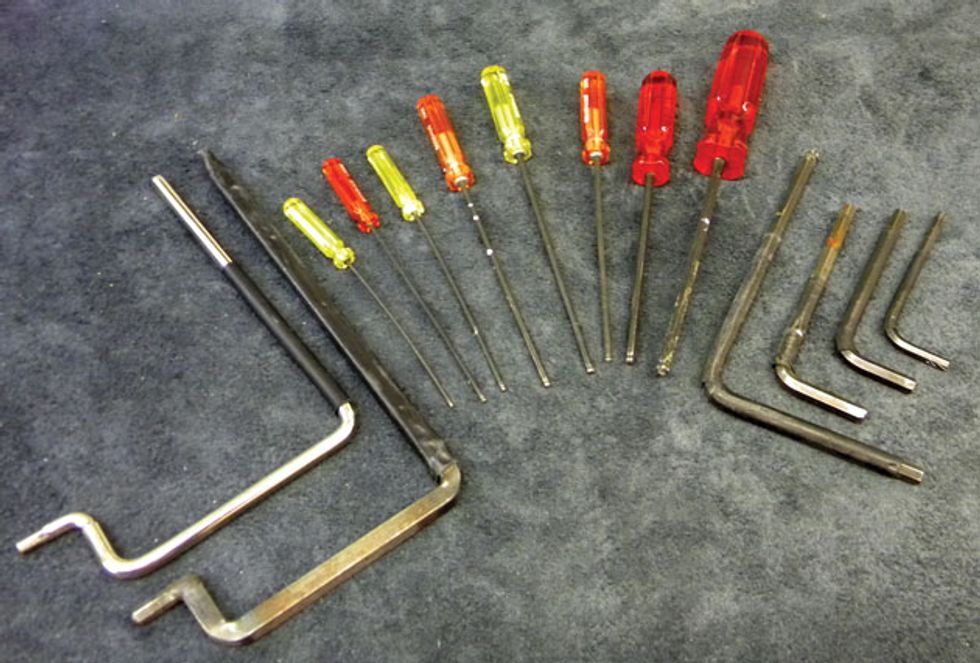
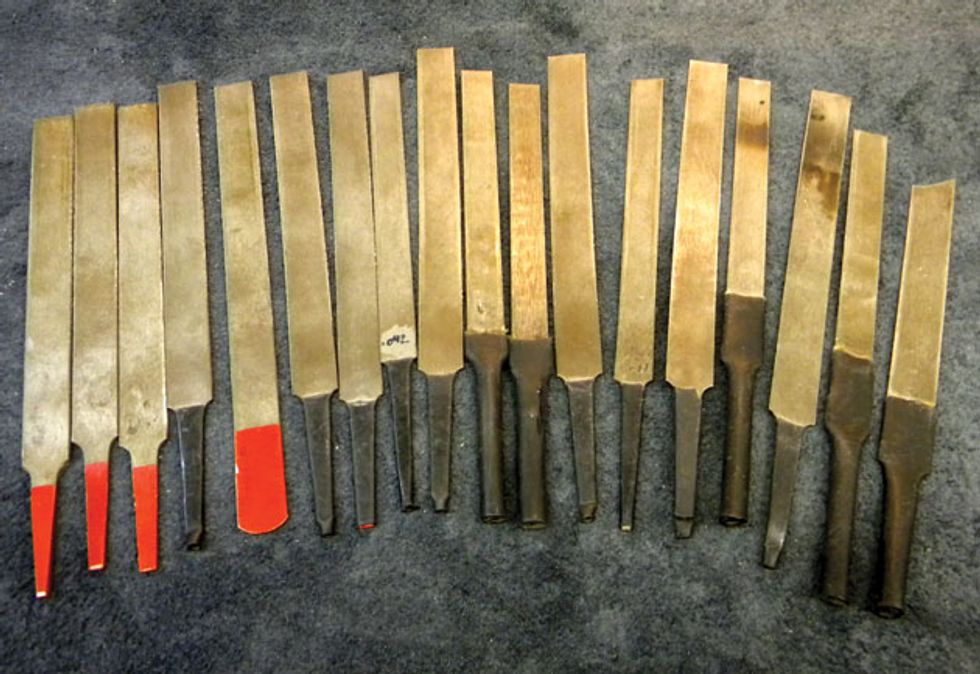
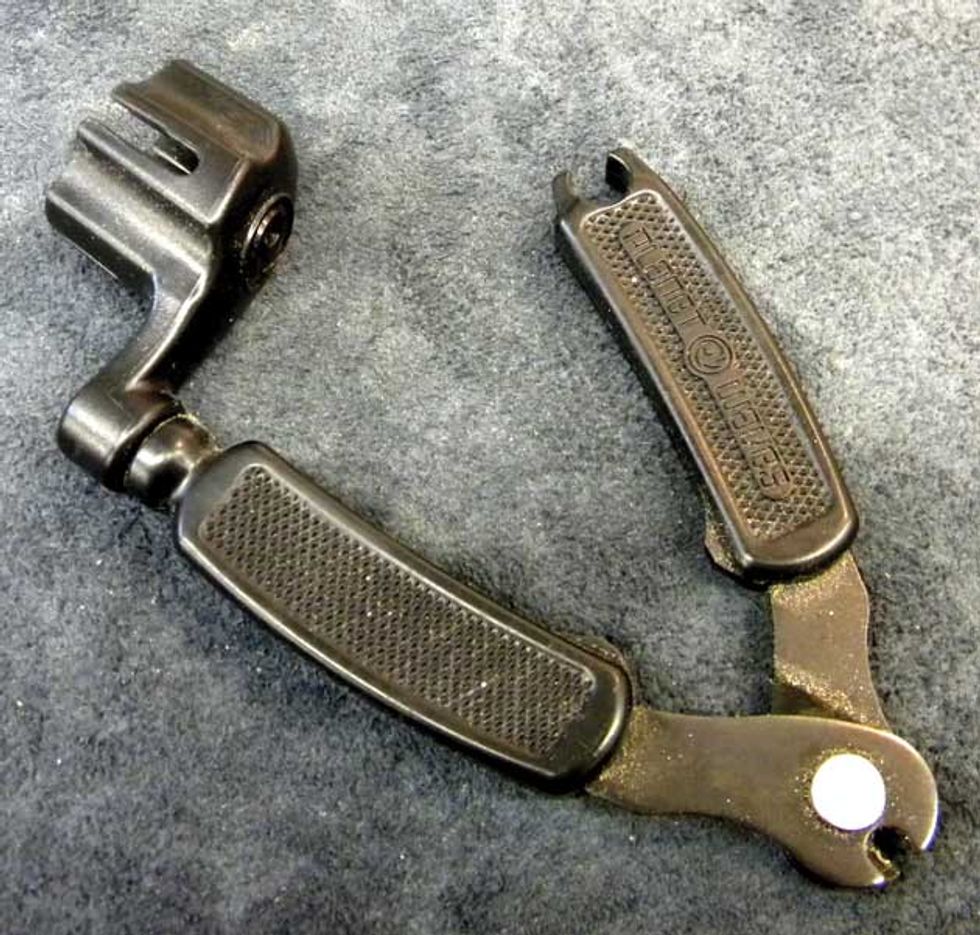
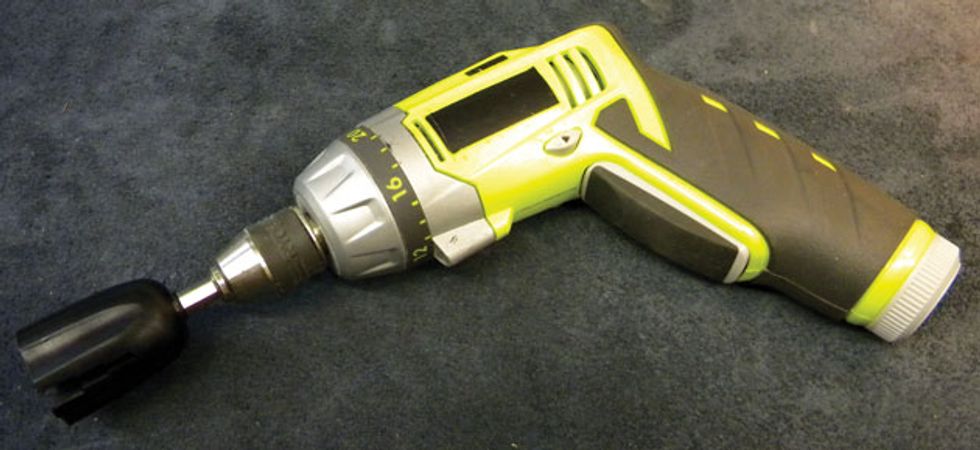
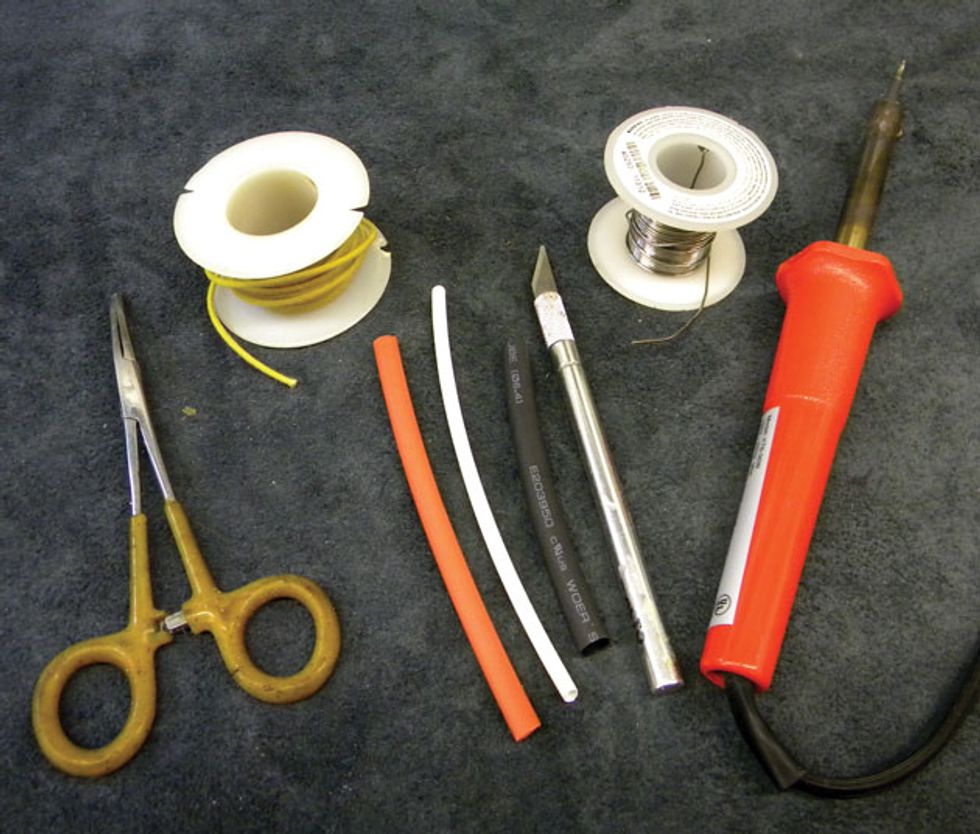
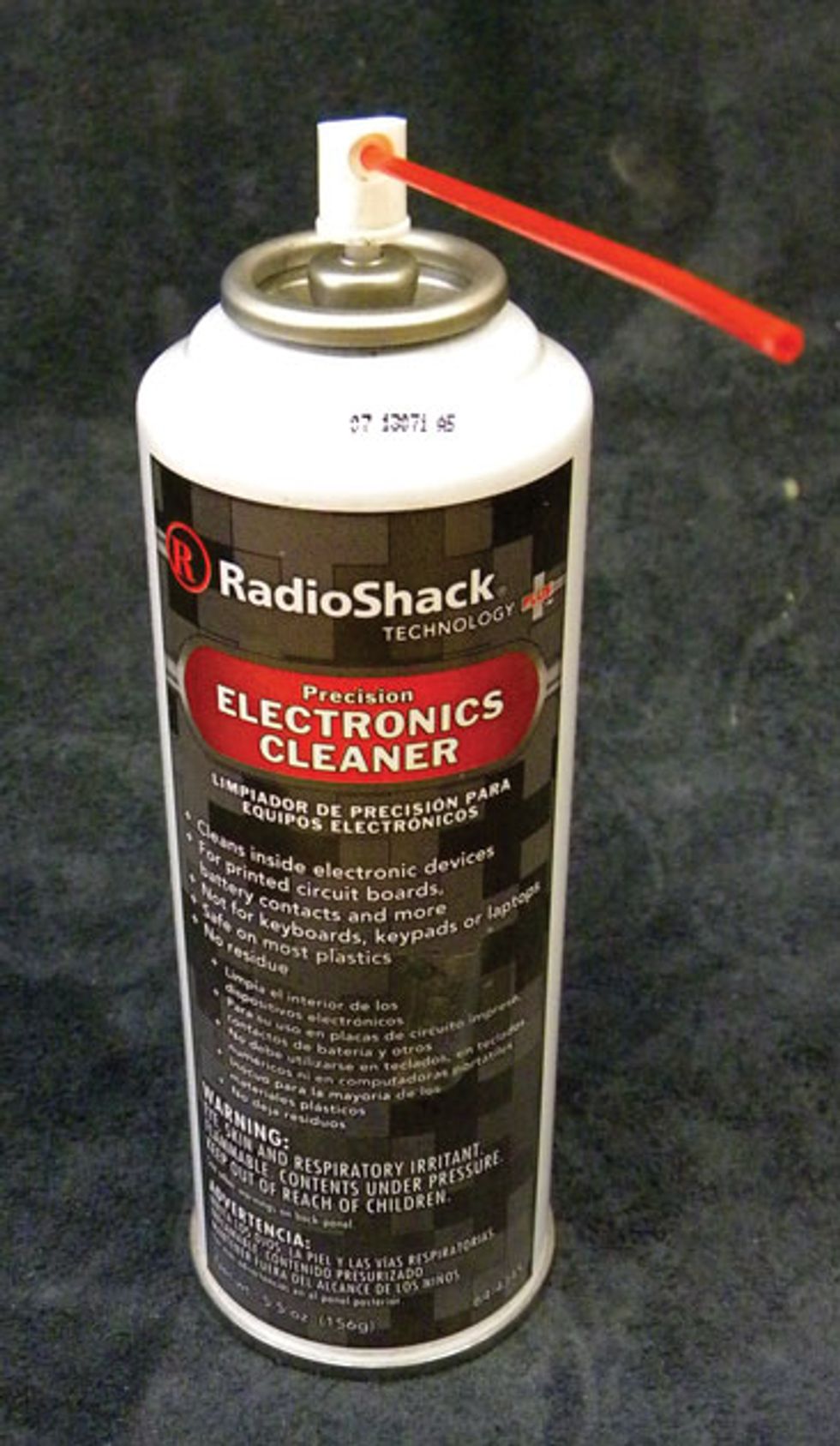
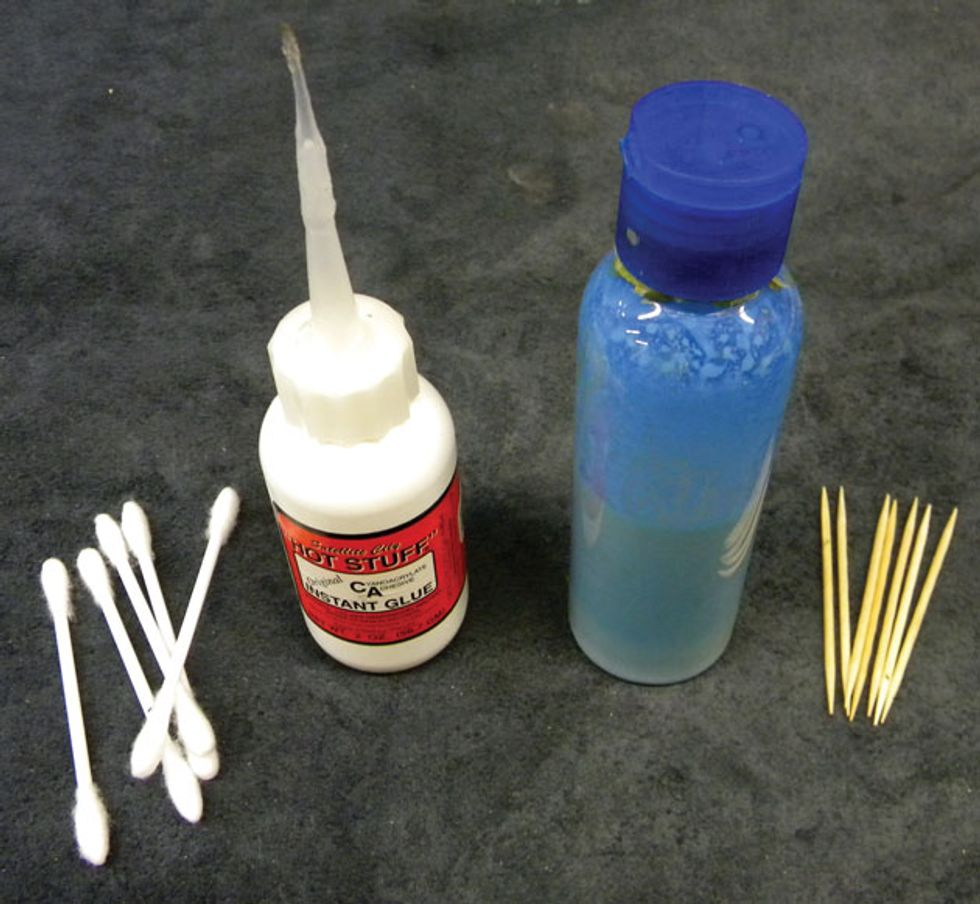
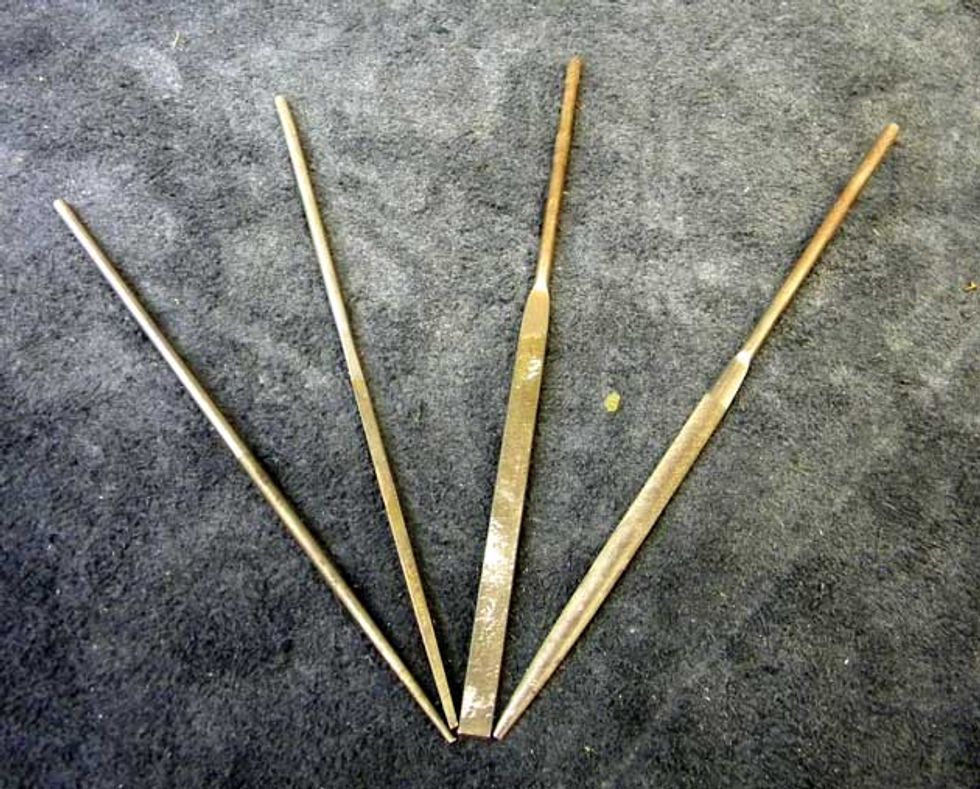





![Rig Rundown: John 5 [2026]](https://www.premierguitar.com/media-library/youtube.jpg?id=62681883&width=1245&height=700&quality=70&coordinates=0%2C45%2C0%2C45)


![Rig Rundown: Russian Circles’ Mike Sullivan [2025]](https://www.premierguitar.com/media-library/youtube.jpg?id=62303631&width=1245&height=700&quality=70&coordinates=0%2C0%2C0%2C0)



